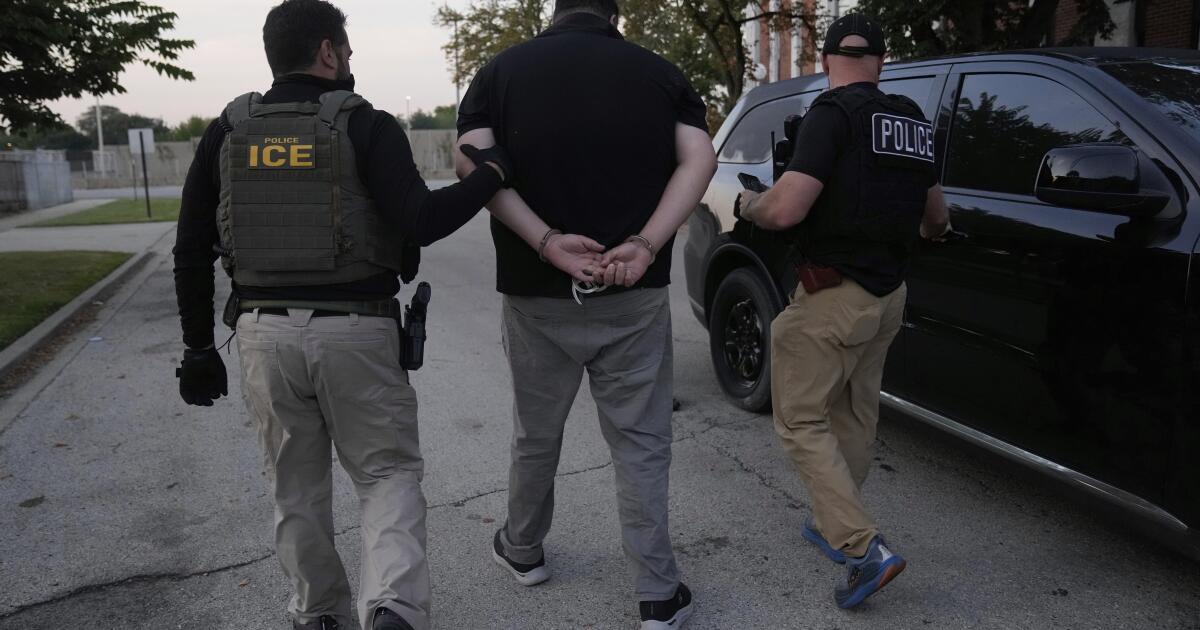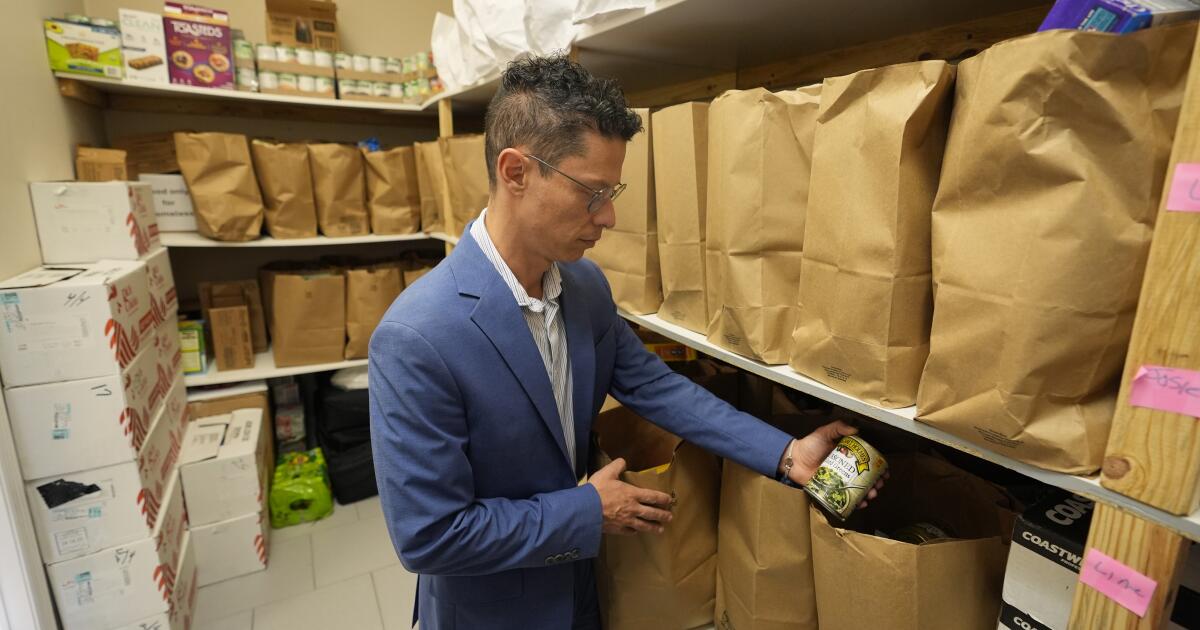ICE denies using excessive force as it broadens immigration arrests in Chicago
PARK RIDGE, Ill. — It was 3:30 a.m. when 10 U.S. Immigration and Customs Enforcement officers gathered in a parking lot in the Chicago suburbs for a briefing about a suspect they were hoping to arrest. They went over a description of the person, made sure their radios were on the same channel and discussed where the closest hospital was in case something went wrong.
“Let’s plan on not being there,” said one of the officers, before they climbed into their vehicles and headed out.
Across the city and surrounding suburbs, other teams were fanning out in support of “Operation Midway Blitz.” It has unleashed President Trump’s mass deportations agenda on a city and state that has had some of the strongest laws preventing local officials from cooperating with federal immigration enforcement.
ICE launched the operation Sept. 8, drawing concern from activists and immigrant communities fearful of the large-scale arrests or aggressive tactics used in other cities targeted by the Republican president. They say there has been a noticeable increase in immigration enforcement agents, although a military deployment to Chicago has yet to materialize.
The Associated Press went on a ride-along with ICE in a Chicago suburb — much of the recent focus — to see how that operation is unfolding.
A predawn wait, then two arrests
A voice came over the radio: “He got into the car. I’m not sure if that’s the target.”
Someone matching the description of the man whom ICE was searching for walked out of the house, got into a car and drove away from the tree-lined street. Unsure whether this was their target, the officers followed. A few minutes later, with the car approaching the freeway, the voice over the radio said: “He’s got the physical description. We just can’t see the face good.”
“Do it,” said Marcos Charles, the acting head of ICE’s Enforcement and Removal Operations.
Agents in multiple vehicles soon overtook the car and boxed it in. After talking to the man, they realized he was not the person being sought but concluded that he was in the United States illegally, so they took him into custody.
Eventually, a little after dawn broke on the one- and two-story brick houses, the man they were looking for came out of the house and got into a car. ICE officers closed in. The man got out of the vehicle and was arrested. ICE said both men were in the country illegally and had criminal records.
Charles called it a “successful operation.”
“There was no safety issues on the part of our officers, nor the individuals that we arrested. And it went smoothly,” he said.
‘ICE does not belong here’
Activists and critics of ICE say that’s increasingly not the norm in immigration operations.
They point to videos showing ICE agents smashing windows to apprehend suspects, a chaotic showdown outside a popular Italian restaurant in San Diego, and arrests like that of a Tufts University student in March by masked agents outside her apartment in Somerville, Mass., as neighbors watched.
Charles said that ICE is using an “appropriate” amount of force and that agents are responding to suspects who increasingly are not following commands.
There has been “an uptick in people that are not compliant,” he said, blaming what he characterized as inflammatory rhetoric from activists encouraging people to resist.
Alderman Andre Vasquez, who chairs the Chicago City Council’s committee on immigrant and refugee rights, strenuously objected to that description, faulting ICE for any escalation.
“We’re not here to cause chaos. The president is,” Vasquez said. He accused immigration enforcement agents of trying to provoke activists into overreacting to justify calling in a greater use of force such as National Guard troops.
“ICE does not belong here,” he said.
Shooting by ICE agent raises tensions
Chicago was already on edge when a shooting Sept. 12 heightened tensions even more.
The U.S. Department of Homeland Security said an ICE officer fatally shot Silverio Villegas González, whom it described as a Mexican immigrant who tried to evade arrest in a Chicago suburb by driving his car at officers and dragging one of them. The department said the officer believed his life was threatened and therefore opened fire, killing the man.
Charles said he could not comment because there is an open investigation. But he said he met with the officer in the hospital, saw his injuries and thought that the force used was appropriate.
The officer was not wearing a body camera, Charles said.
Illinois Gov. JB Pritzker, a Democrat, has demanded “a full, factual accounting” of the shooting. Mexican President Claudia Sheinbaum condemned the death and said Mexico is demanding a thorough investigation.
“These tactics have led to the loss of life of one of our community members,” said Democratic Illinois state Rep. Norma Hernandez.
In another use-of-force incident under Midway Blitz that has drawn criticism, a U.S. citizen was detained by immigration agents alongside his father and hit by a stun gun three times Tuesday in suburban Des Plaines, the man’s lawyer said.
Local advocates have also condemned ICE agents for wearing masks, failing to identify themselves, and not using body cameras — actions that contrast with Chicago Police Department policy.
‘It was time to hit Chicago’
Charles said there is no timeline for the ICE-led operation in the Chicago area to end. As of Thursday, immigration enforcement officials had arrested nearly 550 people. Charles said 50% to 60% of those are targeted arrests, meaning they are people whom immigration enforcers are specifically trying to find.
He rejected criticism that ICE randomly targets people, saying agents weren’t “going out to Home Depot parking lots” to make indiscriminate arrests. Such arrests have been widely seen in recent months at Home Depots and other places of business in the Los Angeles area.
Charles said ICE has brought in more than 200 officers from around the country for the operation.
He said that for too long, cities such as Chicago that limited cooperation with ICE had allowed immigrants, especially those with criminal records, to remain in the country illegally. It was time to act, he said.
“It was time to hit Chicago.”
Santana writes for the Associated Press. AP writer Christine Fernando in Chicago contributed to this report.

